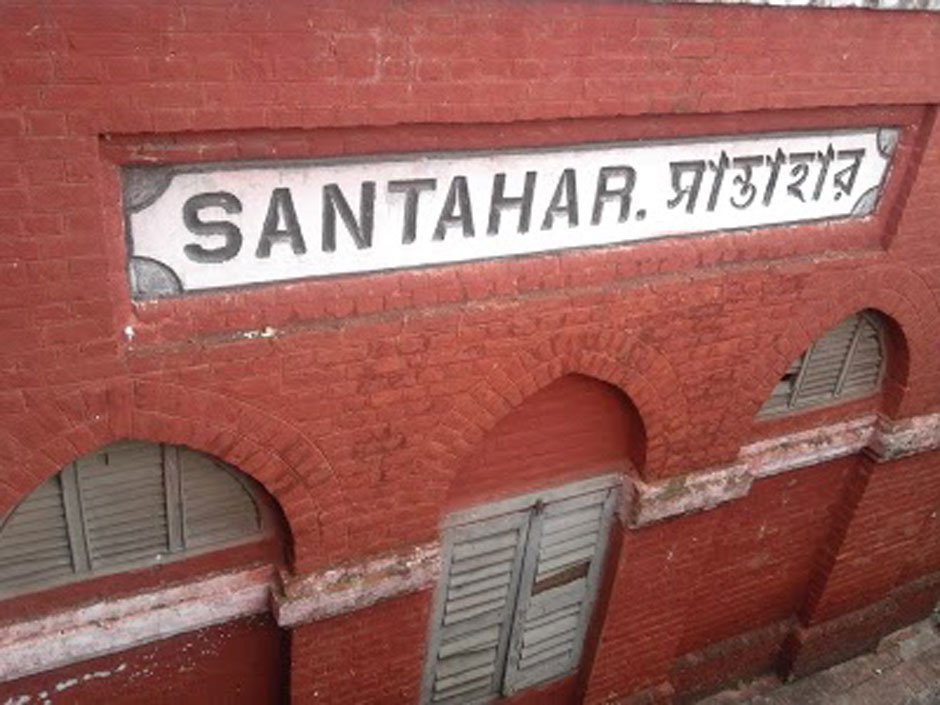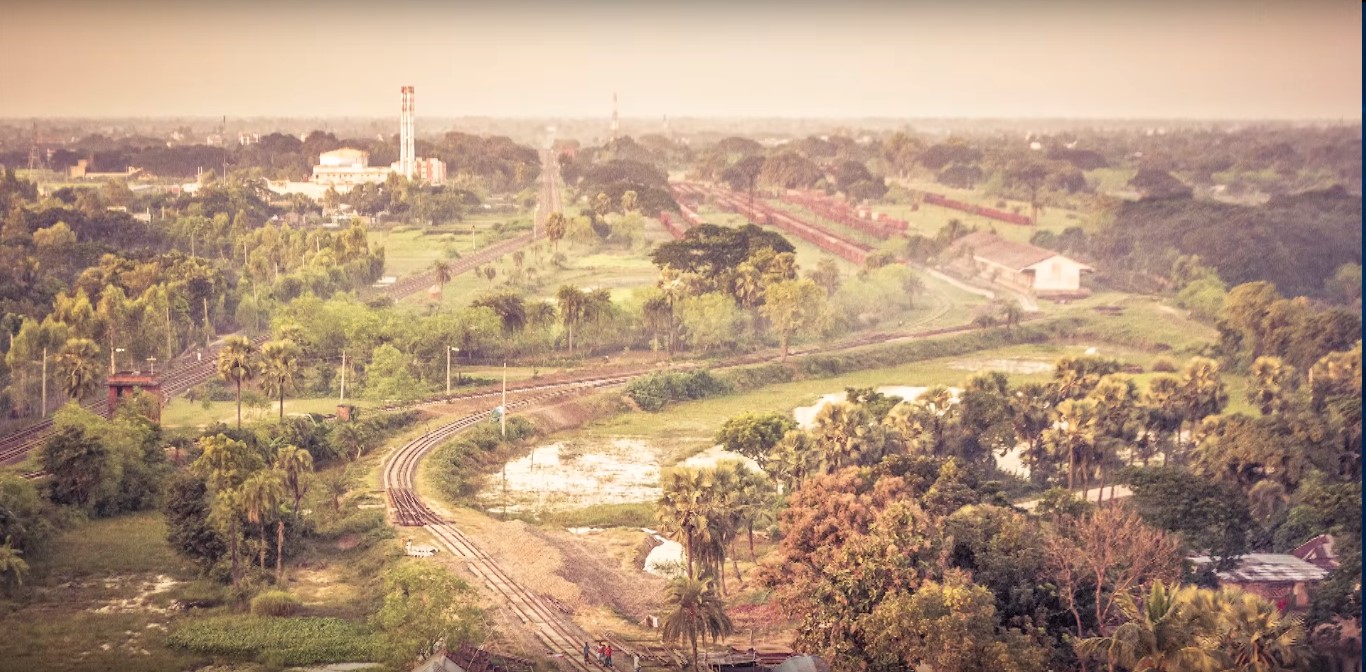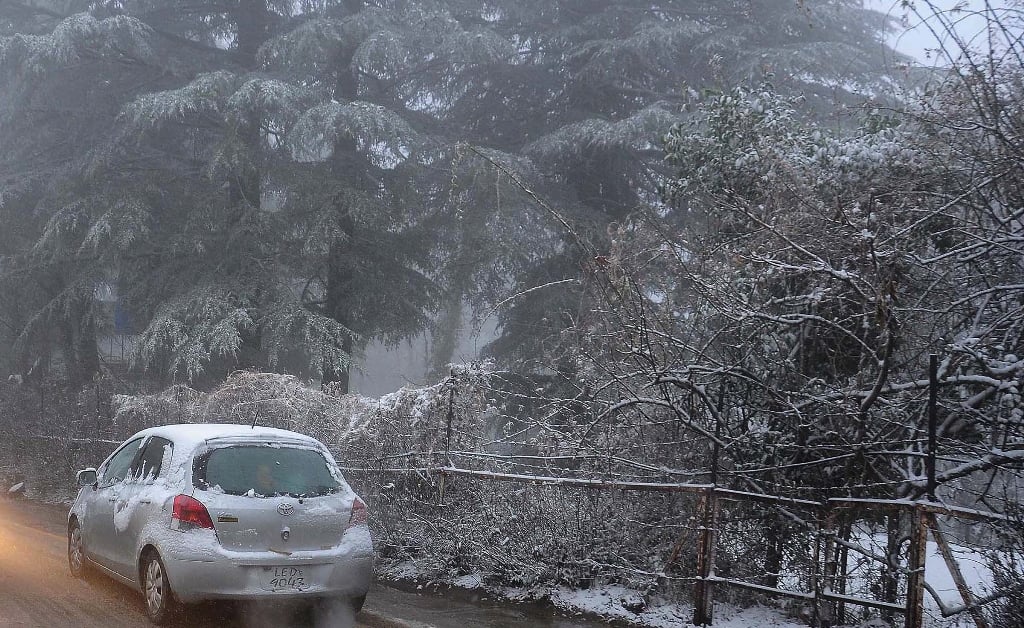
However, there were two prominent men of Santahar whose acts during the bloody siege and mass massacre of almost 15 to 20 thousand men, women and children – from March 26, 1971 to April 17, 1971 – show a strange irony of fate.

The first of these characters was the famous Gramophone Beri-wala – a maker of traditional cigarettes who had a big haveli and a factory in the Kalsagram neighbourhood of the city.
The other guy was the equally infamous bootlegger of the city, Haleem Tari-wala who had an impressive house and winery in the Ghorahaat area of the unfortunate town.
 Santahar Railway station. Photo:FILE
Santahar Railway station. Photo:FILEBoth of them were equally influential denizens of this small city of the East Pakistan with close contacts with the local leaders of the Awami League of Sheikh Mujibur Rahman. If the ‘Gramophone Beri’ was in great demand due to its quality, so was the Tari or palm wine of Haleem Seth.
“The Beri-wala, during campaign for the 1970 general election, had presented a gold canoe to Sheikh Mujib when the nationalist leader visited the area. Canoe was the election symbol allotted to the Awami League,” reminisced Shahid Hashmi, a survivor of the massacre.
Haleem winemaker had; however, a far more interesting personality. Despite his notorious profession, this guy was a devotee of a local saint Baba Dullab Shah. At the annual urs of the saint, the winemaker paid a visit to his shrine while leading a procession that also included elephants.
Fall of Dhaka: How Mukti Bahini ‘cleansed’ Santahar town of non-Bengalis
“Qawals, riding these elephants, played harmoniums and recited devotional verses. And they seemed to be offering wine of love to the spectators,” said Nawab Hashmi, an ‘East Pakistan’ scholar and eyewitness to the tragedy.
“Interestingly, Haleem winemaker had also built a mosque and a fresh water pond outside his winery as if asking the revellers to wash away their sins through ablution and prayers after stepping out of his bar,” Hashmi added.
On March 26, 1971, the non-Bengali citizens of the city were attacked from all sides by thousands of enraged Bengalis supported by the firepower of rebel officials of the East Pakistan Rifle, the Bengal Police, the Ansar Bahini – all led by the brutal leaders of the Mukti Bahini.
 Panoramic view of Santahar PHOTO: SCREENGRAB
Panoramic view of Santahar PHOTO: SCREENGRABThese non-Bengalis resisted for 24 hours this onslaught that coincided with the Pakistan Army’s ‘Operation Searchlight’ in Dhaka. However, these people were deceived into laying down their arms on March 27. Thus, began the systematic massacre of thousands of people loyal to Pakistan.
In these deadly times, the Bihari population of Kalsagram moved to the haveli and factory of Gramophone Beri-wala while the people living in the locality of Loco, Ghorahaat and surrounding areas moved inside the premises of Haleem winemaker’s winery.

Outside these temporary havens, non-Bengalis were being plundered, killed and raped and their houses and properties were being torched and looted by the Mukti Bahini.
The Bengalis also besieged these two places but in view of their longstanding relationship with these influential ‘Biharis’, they first made them an offer – “Save your neck, move with your money and family to some safe location and let us have the rest of the Biharis”.
Both of them requested these Mukti Bahini men to also spare the people taking refuge under their roofs. However, the killers, led by a notorious blackguard Azhar alias Azizer, were not ready to give any concession to anyone else.
Tales of survivors: 1971 war, the ordeal of the non-Bengalis
“Beri-wala, being a practical man, accepted their offer and silently left his haveli for some safe location along with his family ahead of the final attack on his factory,” said Nawab Hashmi, also the former general secretary of the Santahar Welfare Association.
“The infamous winemaker, however, decided to take the most difficult of paths. He stayed with other unfortunate people taking refuge in his winery rather than saving his and his family’s lives. However, the Beri-wala won and the Tari-wala was annihilated,” he said.
The winemaker’s dead body was among the hundreds of corpses strewn across his house and winery. A large well in the premises was also full of human bodies after the Mukti Bahini’s final attack.
“When I returned to Santahar on April 22 along with a contingent of the Pakistan Army and went to the killing fields including the winery of Haleem Seth, the eyewitness told me that Tari-wala, before the start of the final attack on his residence, brought out bags filled with currency notes.
“He had asked the people present there to help him destroy that money. ‘Mukti Bahini men must not get a single penny from this place,’ the Tari-wala had said,” said another survivor, Syed Pervez Afsar.
Haleem winemaker, he said, emerged as a symbol of valour and loyalty in those times of crisis. “The survivors of Santahar will never forget that man in their prayers. He will live forever in our memories,” Afsar added.























COMMENTS (4)
Comments are moderated and generally will be posted if they are on-topic and not abusive.
For more information, please see our Comments FAQ